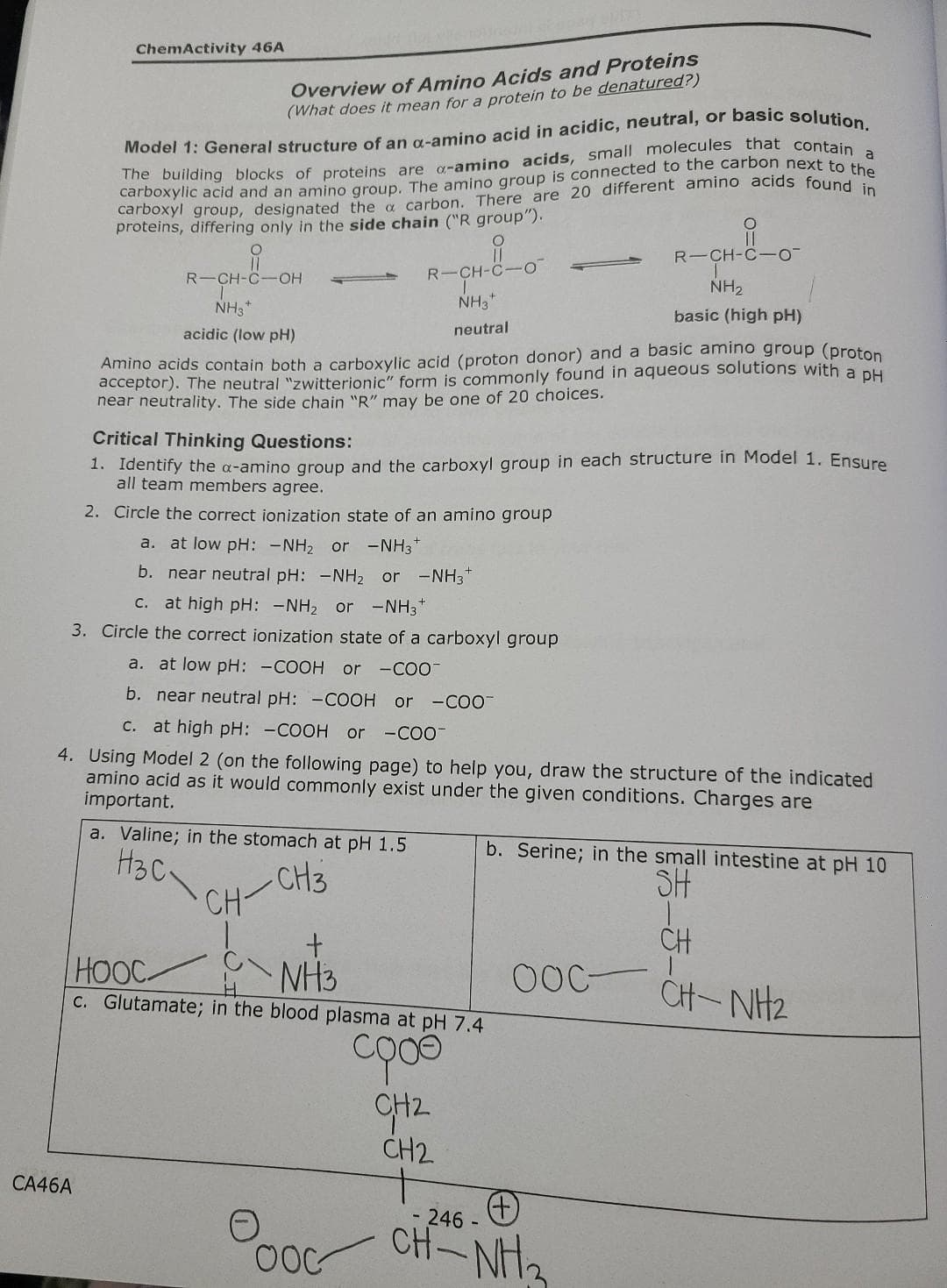(What does it me Model 1: General structure of an a-amino acid in acidic, neutral, or basic solution. The building blocks of proteins are a-amino acids, small molecules that contain a carboxylic acid and an amino group. The amino group is connected to the carbon next to the carboxyl group, designated the a carbon. There are 20 different amino acids found in proteins, differing only in the side chain ("R group"). R-CH-C- -CH-C NH₂ basic (high pH) acidic (low pH) neutral Amino acids contain both a carboxylic acid (proton donor) and a basic amino group (proton acceptor). The neutral "zwitterionic" form is commonly found in aqueous solutions with a pH near neutrality. The side chain "R" may be one of 20 choices. R-CH-C-OH T NH3 + R-CH-C-0 1 NH3 Critical Thinking Questions: 1. Identify the a-amino group and the carboxyl group in each structure in Model 1. Ensure all team members agree. 2. Circle the correct ionization state of an amino group a. at low pH: -NH₂ or -NH3* b. near neutral pH: -NH₂ or -NH3* c. at high pH: -NH₂ or -NH3* 3. Circle the correct ionization state of a carboxyl group a. at low pH: -COOH or -COO b. near neutral pH: -COOH or -COO™ c. at high pH: -COOH or -COO-
Neutral Amino Acids
Amino acids which do not have any charge on them are neutral amino acids.
Globular Protein
The globular proteins refer to the shape of protein specifically spherical in nature apart from spherical form fibrous, disordered and membrane-bound proteins exist. These globular proteins are miscible in water and form a colloidal solution rather than other types which might not exhibit solubility. Many classes of the fold are found in globular proteins, which render them a sphere shape. Globular fold containing proteins usually are referred to by the term globin.
Dimer
Dimers are basic organic compounds, which are derivates of oligomers. It is formed by the combination of two monomers which could potentially be strong or weak and in most cases covalent or intermolecular in nature. Identical monomers are called homodimer, the non-identical dimers are called heterodimer. The method by which dimers are formed is known as “dimerization”.
Dipeptide
A dipeptide is considered a mixture of two distinct amino acids. Since the amino acids are distinct, based on their composition, two dipeptide's isomers can be produced. Various dipeptides are biologically essential and are therefore crucial to industry.

Trending now
This is a popular solution!
Step by step
Solved in 2 steps with 1 images









